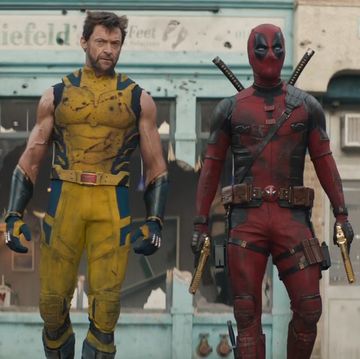Virtual reality is about to hit the mainstream following Facebook's big-money acquisition of the company behind Oculus Rift, but the concept has endured a troubled history.
Nintendo tried its hand at VR in 1995 with disastrous results, churning out a reviled tabletop console called the Virtual Boy to fill the void between the Super Nintendo and the delayed Nintendo 64.
The games and hardware that we feature here on Retro Corner usually evoke fond memories and pangs of nostalgia, but those unfortunate enough to experience the Virtual Boy will remember only migraines, eye strain and disappointing games.
Designed by Game Boy mastermind Gunpei Yoki, the Virtual Boy was Nintendo's first 32-bit console and its biggest commercial failure to date.
The system used dual 1×224 linear arrays equipped with flat, oscillating mirrors to beam a different image to each eye and create what were claimed to be "true 3D graphics".
Although the console was touted as cutting-edge, its developers opted for monochromatic graphics, insisting that full-colour visuals would have made the hardware inaccessibly expensive and resulted in "jumpy" images.
Monochrome visuals didn't do the original Game Boy any harm, but Nintendo's decision to render Virtual Boy imagery in a jarring red made it harsh on the eyes.
Each game came with the option to automatically pause every 15 to 30 minutes, and came plastered with warnings that extended play sessions could cause headaches and even seizures in rare cases.
The Virtual Boy's controller was shaped like an M, and bore a similar design to the GameCube pads that came later. It featured two D-pads for controlling objects in 3D environments, and an extendible power supply that housed the required six AA batteries.
If the risk of migraines and eye strain wasn't enough to deter gamers, the Virtual Boy came with a host of ergonomic problems too.
It was difficult to operate the console while sitting comfortably, even when it was mounted on a tabletop as intended. Nintendo promised to release a harness to affix the device to the user's head, but the Virtual Boy was discontinued before these plans came into fruition.
The battery pack could be replaced by a slide-on wall adaptor, but it was easy to knock this out of position and cause the system to suddenly shut down.
Perhaps some of these issues could have been overlooked had Nintendo launched some worthwhile games for the console, yet the Virtual Boy was sorely lacking in this area too.
Mario Tennis was released as the pack-in title for the console, and is arguably its best-known release. It offered little beyond standard tennis matches with cursory attempts at 3D effects and Super Mario characters shoehorned into the mix.
Very few Virtual Boy titles delivered on Nintendo's promise of heightened immersion, where the player feels as though they have stepped directly into the in-game, although one came admirably close.
Teleroboxer was a cross between Rock 'Em Sock 'Em Robots and Punch-Out!! that cast players as a mechanical boxer and had them take on various opponents from the first-person perspective.
Convoluted controls and unbalanced difficulty prevented the game from ever reaching its potential, but it made better use of the Virtual Boy's 3D capabilities than the vast majority of its peers.
Virtual Boy Wario Land was widely considered one of the only decent titles on the ill-fated console, recapturing the platforming magic of its Game Boy predecessors with some light 3D effects thrown into the mix.
Other titles such as 2D puzzler Bomberman: Panic Bomber and Golf were a poor fit for the platform, and would have fared better on more traditional systems.
Many of Nintendo's flagship series such as The Legend of Zelda and Metroid never found their way to Virtual Boy, and that's probably just as well considering how many botched efforts appeared on the console during its short life span.
Cancelled games for the system include a rail-shooter version of Goldeneye 007, Mario Kart Virtual Cup,Worms, and platformer Mario Adventure - none of which are likely to have single-handedly saved the Virtual Boy from its early grave.
Nintendo released the device in Japan and the US in the summer of 1995, originally forecasting sales of 3 million consoles and 14 million games, but managed to shift just 350,000 units by December of that year.
The Virtual Boy was quietly shortly killed off a short time later, the Big N declining to issue a press release to announce its discontinuation in the hope of sweeping it under the rug.
Virtual Boy will forever remain a black mark on Yokoi's otherwise glistening CV, which includes such innovations as designing the original Game Boy and inventing the modern-day D-pad.
We like to think that Nintendo learned a few valuable lessons from its foray into virtual reality, but its current market position suggests it may have another commercial flop on its hands in the Wii U, albeit to a lesser extent than the Virtual Boy, and for very different reasons.
It was poor design choices that condemned the Virtual Boy to the scrap heap from day one, so there's no reason to suggest the fate of the Wii U is out of Nintendo's hands.














